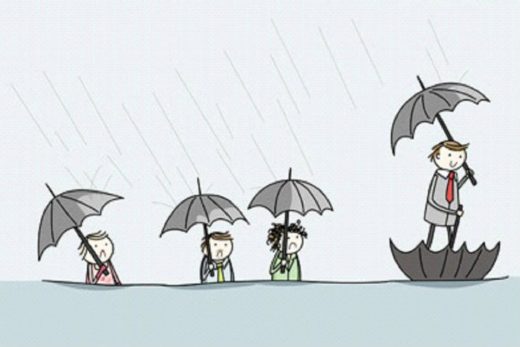One of the most important roles that the leaders play within organization settings is to create the climate for innovation. Organizational climate is a key factor in innovation implementation. Building up an innovative culture in an organisation is one of the important tasks of an innovative leadership. At the same time, creative organizational climate is one of fundamental elements that leads to success of innovation. Doing so successfully will certainly further secure and strengthen the leadership, which initiates innovative climate in the first place. This success will also bind more followers to the leadership because of its respective contributions for innovation, or in another word future success.… Read the rest
Organizational Development
Innovation Culture in Organizations
Growth creates a need for structure and discipline, organization changes which can strain the culture of creativity that is so vital to future success. To sustain competitive advantage, companies need to institutionalize the innovation process; they need to create an internal environment where creative thinking is central to their values, assumptions and actions.
Innovation is the engine of growth. It is also a mindset – meaning it is influenced by beliefs, values, and behavior. Company culture therefore has a huge influence on innovation, being able to either facilitate it or restrain it. Realizing this, many companies have attempted to put systems and processes into place that encourage an innovation culture.… Read the rest
Role of Case Studies in Employee Training and Development
One way to help trainees learn analytical and problem solving skills is by presenting a story (called a case) about people in an organization who are facing a problem or decision. Cases may be faced on actual events involving real people in an organization, or they can be fictional. Business case studies are included in college text books and courses in management, public administration, law, sociology, and similar subjects. They are increasingly available using video and other media. While cases vary in complexity and detail, trainees should be given enough information to analyze the situation and recommend their own solutions. In solving the problem, the trainees are generally required to use a rational problem-solving process that includes the following steps:
- Restating important facts.
Forces for Organizational Change
Change is inevitable in the life of an individual or organisation. In today’s business world, most of the organisations are facing a dynamic and changing business environment. They should either change or die, there is no third alternative. Organisations that learn and cope with change will thrive and flourish and others who fail to do so will be wiped out. The major forces which make the changes not only desirable but inevitable are technological, economic, political, social, legal, international and labor market environments. Recent surveys of some major organisations around the world have shown that all successful organisations are continuously interacting with the environment and making changes in their structural design or philosophy or policies or strategies as the need be.… Read the rest
Levels of Organizational Change Programs
The various levels of organizational change programs may be classified into individual level changes, group level changes and organisational level changes.
Individual Level Change ProgramsIndividual level changes may take place due to changes in job assignment, transfer of an employee to a different location or the changes in the maturity level of a person which occurs over a passage of time. The general opinion is that change at the individual level will not have significant implications for the organisation. But this is not correct because individual level changes will have impact on the group which in turn will influence the whole organisation.… Read the rest
Minimizing Resistance to Change through Discussions
When as many as possible of those people involved in a change understand as much as possible about it and its consequences, resistance is likely to be reduced. It is management’s job to develop this understanding. Resistance will be prevented to the degree that the change agent help the change affected people to develop their own understanding of the need for change, and an explicit awareness of how they feel about it and what can be done about their feelings. Such an understanding will occur only when the information provided is sufficient, factual and accurate.
Management can transmit information about a proposed change and its probable consequences to those affected or concerned in a variety of ways.… Read the rest





